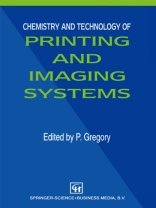Printing and imaging has a major impact on everyone. From the obvious examples of newspapers, magazines and comics through to photographs, currency and credit cards, and even the less obvious example of compact discs, everyone is familiar with the end products of printing and imaging. Until recently, the major printing and imaging technologies have been impact printing and silver halide photography. Important impact printing technologies are offset lithography, gravure, flexography and screen printing. All these technologies, including silver halide photography, are mature and have changed little over the past few decades. In contrast, the phenomenal growth of silicon chip technology over the past 15 years or so has spawned a new era of printing and imaging systems, the so-called non- impact (or electronic) printers. Not all the non-impact printing technologies are of equal commercial importance. Some, like diazotype and conventional photolithography, are mature and are declining in importance. Other technologies, though relatively new, have not achieved notable commercial success. Electro- graphy and magnetography fall into this category. The remaining tech- nologies such as optical data storage (the technology used in compact discs), thermography (the technology used in electronic photography), ink- jet printing and electrophotography are the non-impact printing tech- nologies that are both modern and which have achieved remarkable commercial success, especially ink-jet printing and electrophotography.
P. Gregory
Chemistry and Technology of Printing and Imaging Systems [PDF ebook]
Chemistry and Technology of Printing and Imaging Systems [PDF ebook]
Придбайте цю електронну книгу та отримайте ще 1 БЕЗКОШТОВНО!
Мова Англійська ● Формат PDF ● ISBN 9789401106016 ● Редактор P. Gregory ● Видавець Springer Netherlands ● Опубліковано 2012 ● Завантажувані 3 разів ● Валюта EUR ● Посвідчення особи 4726311 ● Захист від копіювання Adobe DRM
Потрібен читач електронних книг, що підтримує DRM










